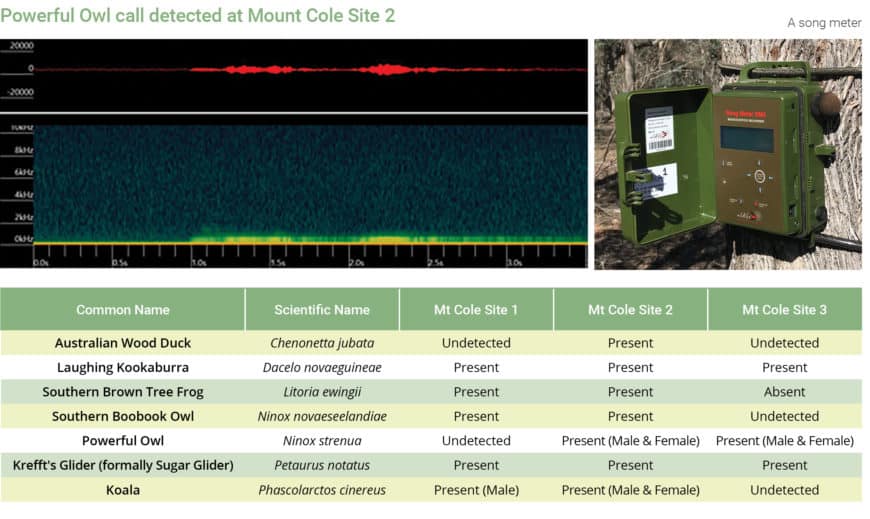PARK WATCH March 2021 |
Whoo hoo – a fantasic find in the forest shared by Nature Conservation Campaigner Jordan Crook.
With deep hoots, Powerful Owls have been discovered for the first time in decades in the forest of Mount Cole.
Unfortunately, this threatened species is living in areas scheduled for logging by the state-owned logging company VicForests.
This cause for celebration mixed with dismay reaffirms the need for the Victorian Government to protect these critical habitats in new national parks – before they are destroyed.
Australia’s largest nocturnal bird was detected using remote acoustic recording devices, or ‘song meters’ set up by VNPA citizen scientists at three sites in Mount Cole between COVID-19 lockdowns. Ecologists who analysed the recordings confirmed that a significant population of Ninox strenua is present in Mount Cole forests – in and around planned logging coupes.
VNPA’s formally submitted the threatened species detection report in February to the Victorian Government and the Office of the Conservation Regulator. This critical work could only happen thanks to our dedicated volunteers and the generosity of our supporters.
VicForests don’t conduct pre-logging surveys in the areas they plan to log in the west. There are 10–14 logging coupes planned or already logged within the Mount Cole area.
Due to their size (they can grow to 70 centimetres tall with a wingspan up to 1.5 metres), Powerful Owls need large hollows for nesting. These hollows, only occurring in older trees, are destroyed by clearfell logging or in the post-logging burning used in forestry operations.
This was highlighted in a recent Threatened Species and Communities Risk Assessment of the Regional Forest Agreements by the Department of Environment, Land, Water and Planning:
“At the landscape-level, timber harvesting when conducted over a typical rotation period of 80 years will inevitably reduce the proportion of the forest in older age classes, including mature and senescent growth stages, depending on bushfire history. This effect will vary from area to area, depending on the extent of older age classes and their protection in the reserve system. However, where this effect is substantial, it would make the forest at a landscape-scale less suitable for hollow dependent species such as possums, gliders and large forest owls.” (DELWP, 2020)
The Powerful Owl lost a substantial amount of habitat in the 2019–20 bushfires (see ‘After the fires‘). With several detections confirmed, Mount Cole appears to be a stronghold for this giant of the sky.
Calls of other iconic wildlife were also captured by the song meters in Mount Cole – the short barks of Krefft’s Glider and grunts of Koalas, among others (see table below.)
This is the third threatened species detection report submitted due to survey work by VNPA citizen scientists.
In early 2020 we found the endemic and endangered Mount Cole Grevillea in logging coupes at Mount Cole. (See June 2020 Park Watch ‘A rare discovery‘)
In June 2019, the Victorian Environmental Assessment Council (VEAC) recommended the creation of a new Mount Buangor National Park for Mount Cole, 45 minutes west of Ballarat.
But the Andrews Government is still delaying accepting this expert recommendation for it and other new national parks in Victoria’s Central West (read more on the following pages).
We will continue to conduct survey work in these areas and call on the Victorian Government to permanently protect them before they are irreparably damaged by logging.
These forests should remain filled with the sounds of wildlife forever.
Did you like reading this article? Want to be kept up to date about this and other nature issues in Victoria? Subscribe to our email updates.
You can also receive our print magazine Park Watch four times a year by becoming a member. Find out more here.

